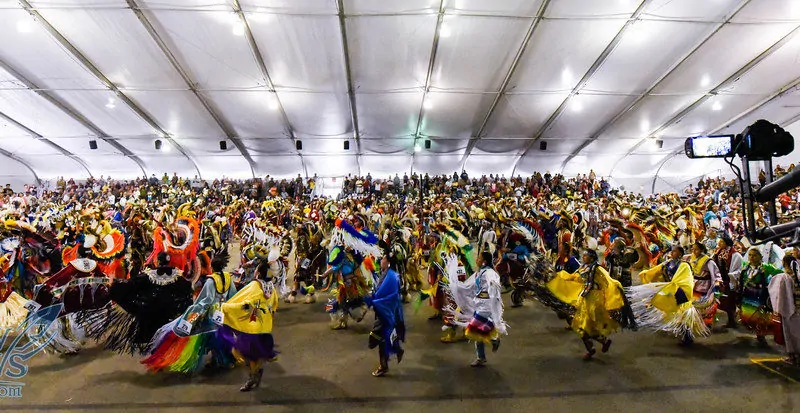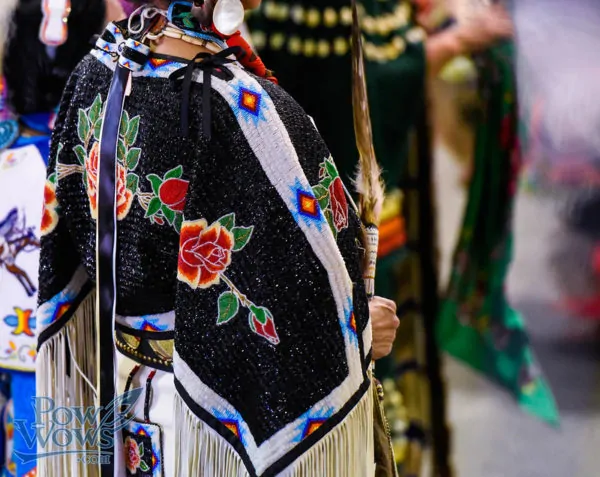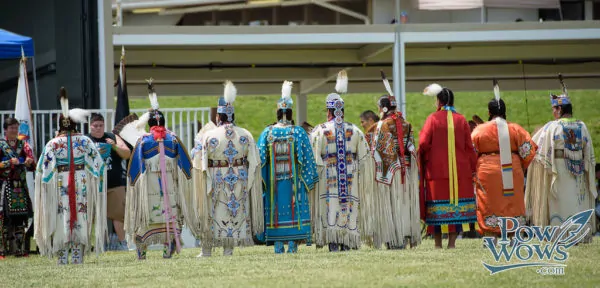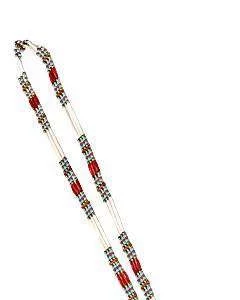Contemporary Native Americans face many challenges today. If you watch the news you'll see headlines about mascots, celebrities wearing headdresses, and pipelines. While these are important issues, there are other problems facing Native communities that are more significant.
As the years change, so do the stories about struggle, challenge, and hardship. However, there is also hope, perseverance, and celebrations to acknowledge. As we turn the calendar on another year, the important issues surrounding the Native American community may seem the same as the year before, but it's always good to remember that great things are happening and there is a light at the end of the tunnel.
Challenges that Native people face are experienced socially, economically, culturally, and on many other fronts, and include but aren't limited to:
- Impoverishment and Unemployment
- Violence against Women and Children
- The Climate Crisis
- Less Educational Opportunities
- Inadequate Health and Mental Health Care
- Continued Issues with Voting Rights
- Native Languages are Being Threatened
There are currently 574 tribes that are recognized by the federal government, which are faced with these ongoing issues. The Native Americans, a diverse race of people, are subjected to racial abuse, societal discrimination, incorrect and inappropriate depictions in the media and arts, mental, spiritual, and physical violence, and much more. These historical and social hurdles have resulted in many Native Americans succumbing to physical and mental health challenges, as well as not being seen or heard by the rest of society.
In this post, we will be looking at the various problems going into 2022 that the modern Native American has to grapple with. This is by no means a definitive or comprehensive list of issues and challenges.
Impoverishment and Unemployment
The Native American population is grappling with poverty and joblessness even with casinos. Ever since the recovery from the Great Depression the Native American society has been largely left out of economic prosperity.
While data for the U.S. Census are difficult to track on Native Americans for various reasons, there are mostly up-to-date stats on topics such as poverty and unemployment from the 2020 U.S. Census.
According to the World Population Review, about 33 percent of all Native Americans live in poverty, which has increased since the last Census in 2010.
Some states have higher poverty rates than others. For example, South Dakota has about a 49 percent rate while Oklahoma has a percent.
Due to the high poverty rate among the Native Americans, many live in overcrowded and poor conditioned houses on Indian reservations. There are over 90,000 under-housed or homeless American Indians. The living conditions of some Native Americans have also been compared to those in third-world countries.
Currently, over a third of American Indians live on largely concentrated reservations with over 700,000 inhabitants. Mostly, the development of houses on reservations is attributed to underfunding by the federal government.
Poverty can be largely attributed to the lack of employment. In September of 2021, the national unemployment rate fell to 4.8 from 5.8 compared to June 2021 (Native Americans’ rate was 8.5), showing that people are finding more job opportunities now that things are beginning to settle. In 2020, the rate was significantly more due to shutdowns during the pandemic. The pandemic affected Native communities incredibly, raising their overall unemployment rate to over 26 percent.
The reasons behind poverty and unemployment issues within Native communities are historical and systemic.
Violence against Women and Children
About 46 percent of all Native American women have experienced some sort of physical abuse including rape, stalking or dating, or domestic violence. It is also predicted that one in three Native women will experience physical trauma at some point in their life.
On some reservations, Native American women are murdered at a rate, 10 times more than the nation’s average. A report from the Department of Justice in 1990 states 80% of the physical abuses and rape experienced by Native American women are perpetrated by non-native Americans.
Unfortunately in 2021, missing and murdered women and girls of other races, especially Caucasian, continue to gain more news coverage than that of a Native woman or girl. This has been brought to attention once again after a young, white woman, Gabby Petito went missing and was recently found strangled in the state of Wyoming.
In the past 10 years, more than 400 indigenous women and girls were reported missing in Wyoming, according to the report––why have we not heard of them?
In an interview about the case in Reuters, Jolene Holgate, a director for the Coalition to Stop Violence Against Native Women stated:
“The national attention and resources that were put toward that case when there’s such a high number of MMIW (missing and murdered indigenous women) cases in Wyoming and even the neighboring state of Montana, it did not feel good. I think there’s this practice of discounting indigenous bodies when it comes to folks who go missing or murdered.”
Thankfully, many people are working to raise awareness of the Missing and Murdered Indigenous Women (MMIW) through media outlets, social media, and political campaigns, and there are various ways individuals can get involved.
Natives in the Middle of the Climate Crisis
Not only are Native Americans continuously being exploited for natural resources, but they are also smacked in the middle of the world’s climate crisis.
Regarding exploitation, some of the Native American reservations such as the Ute tribe contain natural resources such as timber, oil, and gas. American Indian territories in the West house gold and have had previous clashes with gold miners. These areas have been exploited for their natural resources for economic reasons and have threatened the area with climate change. Efforts have been made by the communities to safeguard natural resources and protect the environment.
In recent news, Indigenous people have flocked to the White House to help lead protests that urge President Biden to end fossil fuel projects and to declare a climate emergency.
“The demonstrations marked the first day of “People vs. Fossil Fuels,” a week of demonstrations and civil disobedience organized by Build Back Fossil Free, a coalition of hundreds of Indigenous and climate, social, economic, and racial justice organizations. More protests are planned at the White House each day this week except for Friday when protestors will march from the White House to Congress to risk arrest on the steps of the Capitol.” (Indian Country Today).
Continue watching and listening as groups like Indigenous Climate Action, young activists, and individuals on social media help bring awareness and put a stop to the harmful actions which the government and big organizations have allowed.
Native Americans Have Fewer Educational Opportunities
Native Americans represent less than 1 percent of the student population in the United States. Since 2008, the graduation rates of Alaska Native and American Indians has been dropping. The Native American dropout rate is twice the nation’s average and is more than any other U.S racial or ethnic group.
According to the National Center for Educational Statistics, the average high school retention rate was at 74 percent between 2018 and 2019, compared to the national average of 86 percent.
This high dropout rate can be attributed to how they are treated in school or their academic needs not being met. For some Native Americans, their dropout can be linked to the structural deterioration and poor equipping of schools due to insufficient funding from the federal government.
Then there is higher education.
Only 19 percent of Native Americans ages 18 to 24 are enrolled in college compared with 41 percent of the overall U.S. population, according to the Postsecondary National Policy Institute.
Efforts are being taken state-wide and nationally to increase the graduation rate among Native Americans, offer equal access to scholarships and other educational resources, increase educational funding in low-income areas, and programming to support high school and college students.
Inadequate Health and Mental Health Care
Many Native Americans live in poor health conditions with limited access to healthcare facilities. This health care disparity has led to high rates of obesity, diabetes, HIV/AIDS.
The Indian Health Service (IHS), a government agency, was intended established to provide healthcare services to American Indians. Unfortunately, the IHS is underfunded and many of the local IHS facilities lack the basic amenities to provide quality and excellent healthcare services. Mostly the local IHS facilities are distant from the Native Americans. It makes it a grueling process for the locals to access the facility.
Did you know that in 2019, suicide was the second leading cause of death for American Indian/Alaska Natives between the ages of 10 and 34?
Access to appropriate mental health services is difficult due to economic, societal, and regional barriers.
Places such as social media platforms are bringing more awareness to mental health challenges within Native communities. Online resources, such as SAMHSA’s list of Behavioral Health Services for American Indians and Alaskan Natives, is a definite help for those who don’t know where to turn.
Unable to Exercise Voting Rights
Native Americans have suffrage rights but are unable to exercise them because of the unavailability of polling units. Some of the natives' reservations such as the Goshute Reservation in Utah and the Duck Valley reservation in Nevada do not have any polling unit near them. The polling units around are many miles away.
Many Native people on reservations are unable to register to vote. Many reservations don't use traditional street addresses and their applications for voting cards are rejected.
Going into 2022, this issue, unfortunately, continues on.
Thankfully, though, a new piece of legislation has been introduced in August called the 2021 Native American Voting Rights Act.
High Country News shares six important things we should know about this bill.
- NAVRA improves access to voter registration, polling places, and drop boxes in Indian Country.
- It mandates the acceptance of tribally or federally issued IDs where IDs are required.
- It permits tribes to designate buildings to use as addresses for registration.
- The law will establish Native American voting task forces.
- It requires pre-approval of any changes in election procedures.
- NAVRA also mandates culturally appropriate language assistance.
Follow this important bill here.
Native Language is Becoming Extinct
Native American languages are gradually becoming obsolete. Only 175 out of the more than 300 native languages remain today according to the Indigenous Language Institute. It is also predicted that without any measure set up to salvage the remaining languages about 20 will be left by 2050. Many educators that want to teach Native American children the Native languages face an obstacle of poor funding and resources. Not only that, but COVID-19 has put Native languages in jeopardy.
Fortunately, things are happening.
The United Nations has designated the period between 2022 and 2032 as the International Decade of the World's Indigenous People.
Recently, between October 5 and 7, a three-day virtual conference was held by Cultural Survival, called Restoring and Protecting Our Native Languages and Landscapes.
This conference “will equip individuals working at the community level with tools and best practices for revitalizing and strengthening Indigenous languages and the Traditional Ecological Knowledge carried within them.”
Native American activists are doing their part to be heard so that their future language will be heard for many more years to come.
Limited Financial Institutions in the Native Communities
There is a dearth in the Native American communities. In many communities, the land is held by the government in trust, which makes it difficult for the Natives to leverage them in the collection of loans that they will use to set up businesses. According to the Bureau of Indian Affairs, about 56.2 million acres of land are held in trust by the federal government. This, in turn, has resulted in the stunted economic growth of the area and one of the most stubborn Native American issues.
Natural Resources Exploitation
Some of the Native American reservations such as the Ute tribe contain natural resources such as timber, oil, and gas. American Indian territories in the West house gold and have had previous clashes with gold miners. These areas have been exploited for its natural resources for economic reasons and have threatened the area with climate change. Efforts have been made by the communities to safeguard natural resources and protect the environment.
Conclusion
There will always be struggles and hardships––for any ethnicity and culture; however, it seems that Native American issues are uniquely challenging and stubbron. It is obvious though, that Native individuals and communities are strong and resilient, and that they continue to lead, fight, and heal no matter what comes their way. Despite the negatives, there will be good things that come in 2023.
2023 Explore Native Challenge
Bonus Code – 1247856
Last Updated on November 16, 2023 by Paul G







James H Harvey
says:Hello, would like to bring your attention to The Chemakum Tribe who has recently posted a website to bring attention to the misleading narrative of the federal government through the broken recognition process. Most website list them as extinct or absorbed by other tribes, these accounts are misleading and help with failures within the recognition process, fact is they come from a long line of survivors and what a powerful journey they have had to survive.
Please look at their website, chemkum.org If you can help bring attention to their cause and help them get their voices heard, would be a great day. They can be contacted at Chemakum Tribe, PO Box 1480 Port Hadlock, WA 98339.
Thank You James Harvey, Governor Chemakum Tribal Services
Kathie Ambrosio
says:I was speaking with someone who said there is a report that Native Americans are genetically unable to read as well as others who are not Native Americans. I was incensed by that remark and that people just accept it. As someone who has worked with in the early education field, I beg to differ. There was an article I read while in college and I forgot who wrote it. I only remember that it was about a study done on either 3 or 4th graders who were having difficulty with reading and appeared to have ADA problems as well. This was early 1970s so while not specifically stated, it was at a public school and i had the impression it was a school that was predominately Anglo students.
Who the researchers were , I do not remember. But their theroy was that crawling and the lack of it had a lot to do with the inability to read. So, they took the students from these classes and had them go through some excerises in crawling. The result was that the students reading improved. They then experimented to find what crawlings affect would have on students who had not problems with reading. Results were that those students reading comprehension also improved. Since, this was what I was interested in pursuing at the time, I forgot about it.
However, I remember that article, because as a substitute teacher I have seen so many more students with reading difficulties. When that person mentioned the study that said that Native Americans were genetically impaired readers and languages were harder for them, I remembered that article. It is true that Native Americans had customs that were necessary for survival. Babies were carried in cradle boards and they were were carried on backs for long distances, they were left in cradle board to keep them safe while parents did other things. Children also had to be quiet in natural settings for survival and being able to hide from enemies. That custom is still very much in use to this day. It was once a very necessary means of not only the child’s survival but as much as a whole village. At that time, reading was not a skill needed by Native Americans. Thus, reading or its lack was not important. Running and various exercises help counter some of the affects of not crawling. But in this day and age and lack of running jumping and even crawling which is most important before walking for overall body coordination is rarely done.
It is a custom – not a genetically predisposed done deal. It can be addressed and worked with to overcome the affects of it. The sooner the better. There are skilled Optomologists who can identify and address this treatable problem. I apologize that I am not able to provide the information on either of the research articles. Perhaps, someone who is more tech savey than I am may find them.
Susan Driskill
says:It’s May 2023 and my grandson who is one of the VERY few indigenous in his Public school came home yesterday with a church run trinket on his wrist promoting a specific churches beliefs. They are allowed on the campus prior to school hours which is when my grandson is supposed to go to breakfast, but instead is being bribed with candy and trinkets to come in and listen to their bible teaching. When asked how this was going on on public school grounds that we didn’t want my grandson subjected to their church we were told that the school board had approved the church being there. What ever happened to separation of church & state?!!! We also asked why we weren’t notified that this was happening so we could council my grandson and got no answer from the principal (who with her blonde hair and blue eyes informed my grandsons father that she was American Indian too!) The Holocaust was raised in the conversation along with examples of if my grandson had been Muslim would he have been treated differently? This isn’t the first time we’ve had to deal with this problem at this school! They are totally uneducated about MMIW, or the churches involvement in the theft and murder of our children in their boarding schools, and when my son brought it up in the conversation he was told but that was a long time ago & isn’t happening now….
Nothing changes. It’s still about trying to convert our children. It’s still about “killing the Indian and saving the man”.
Lois Danks
says:Thanks for very thorough overview! I am concerned over the attacks on the Indian Child Welfare Act that might be overturned by a rightwing Supreme Court!!! With children being taken away and adopted to white families, the cultural genocide continues…the ICWA is a help, but needs to have monitoring and enforcement. Without the children learning the culture, there is a fading future.
Pegge
says:I am in a knitting group, knitting sweaters for children. I would like to give mine to Indian children. Is there a place that accepts and distributes sweaters to children?
Cameron Iacono
says:We have to support Native american rights.
Beata Skroban
says:Preserving indigenous languages is crucial, it means identity. If your language disappears, in fact you lose your identity.:(((
Sheila Palmer
says:I think the Native American Indians lives, can become better. There are some successful Indians. Teaching and LEARNING, is the best TOOLS to do.
Robert C Wheeloer
says:Please read this: https://truthnewsnet.org/trump-did-this/ This is making the rounds of the Internet. It must be answered with truth and facts! He lists all his actions for the last 3.5. years! What about our Native Americans — what hasn’t been done? What has been ignored! Please help get the real actions highlighted. Make sure the Democrats get the story in their pitches. Please send me some counters to his accomplishments.
Thanks,
Bob Wheeler
Judiith Mitchelll
says:Plz help me & my bro. We were adopted at age & as we got older we were told that we had some Cherokkee heritage in us.Can you plz all me where canwe go or call to find out. My e-mail is [email protected] thank you
Billy Bob Joe
says:you could probably go to ancestry.com but I’m not 100% sure how it works.